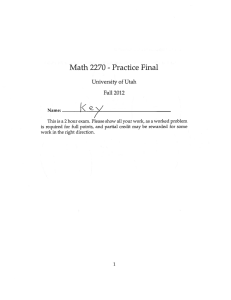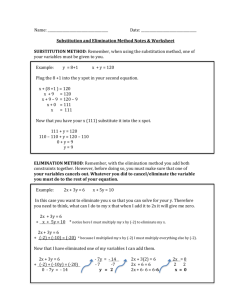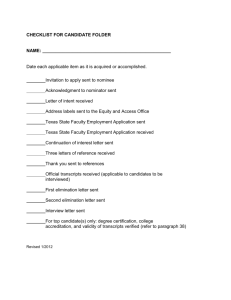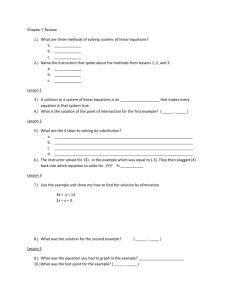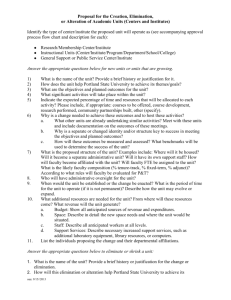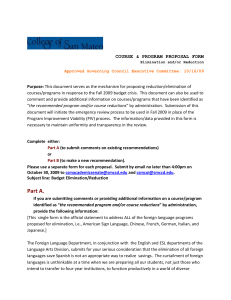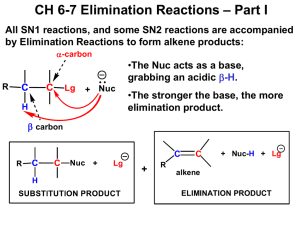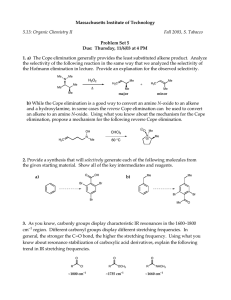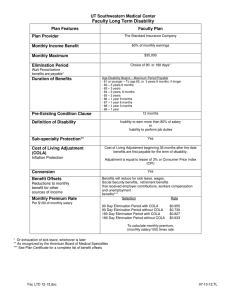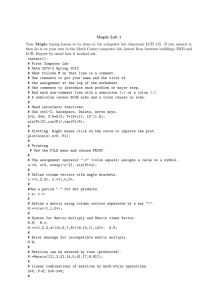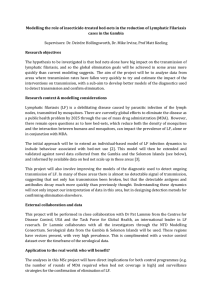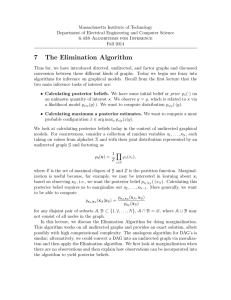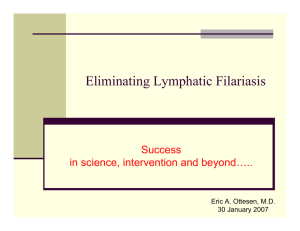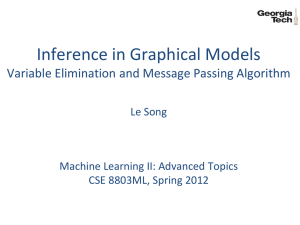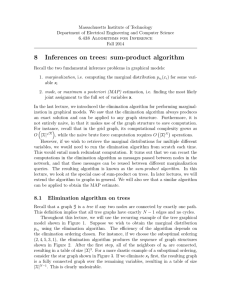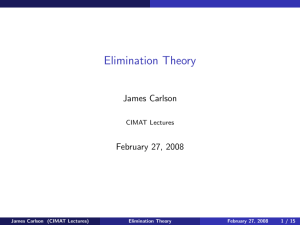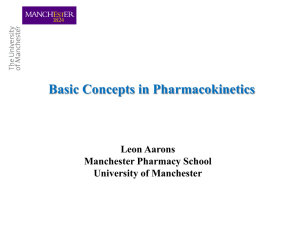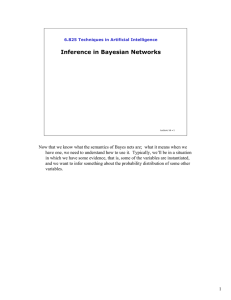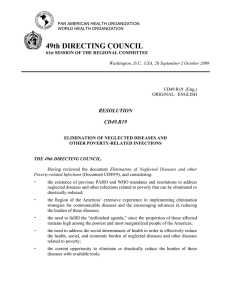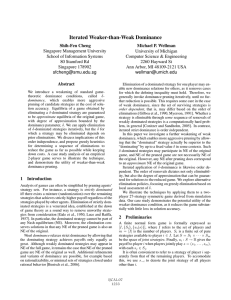Document 10509196
advertisement
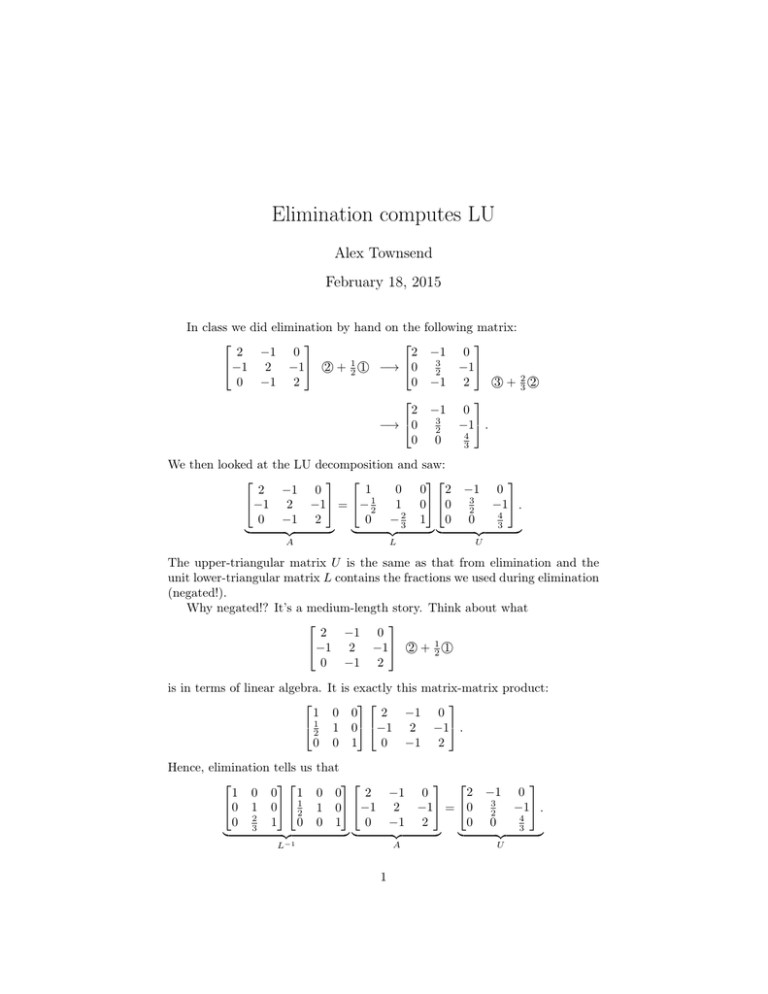
Elimination computes LU
Alex Townsend
February 18, 2015
In class we did elimination by hand on the
2
2 −1 0
−1 2 −1 2 + 21 1 −→ 0
0 −1 2
0
2
−→ 0
0
following matrix:
−1 0
3
−1
2
−1 2
3 + 32 2
−1 0
3
−1 .
2
4
0
3
We then looked at the LU decomposition and saw:
1
0 0 2
2 −1 0
−1 2 −1 = − 1
1 0 0
2
0 −1 2
0 − 23 1 0
|
{z
} |
{z
}|
A
L
−1
3
2
0
−1 .
4
3
0
{z
}
U
The upper-triangular matrix U is the same as that from elimination and the
unit lower-triangular matrix L contains the fractions we used during elimination
(negated!).
Why negated!? It’s a medium-length story. Think about what
2 −1 0
−1 2 −1 2 + 21 1
0 −1 2
is in terms of linear algebra.
1
1
2
0
Hence, elimination tells us
1 0 0
1
0 1 0 1
2
0 32 1
0
|
{z
L−1
It is exactly this matrix-matrix product:
0 0
2 −1 0
1 0 −1 2 −1 .
0 −1 2
0 1
that
0 0
2
1 0 −1
0
0 1
}|
−1
2
−1
{z
A
1
2
0
−1 = 0
2
0
} |
−1
3
2
0
{z
U
0
−1 .
4
3
}
Thus, the fractions we used in elimination are telling us about L−1 , not L.
When we invert we introduce minus signs. That is
1
1
2
0
−1
0 0
1
1 0 = − 12
0 1
0
0 0
1 0 ,
0 1
1
0
0
0
1
2
3
−1
1
0
0 = 0
1
0
0
1
− 32
0
0
1
and
1
L = 0
0
0
1
2
3
0
1
0 12
1
0
−1
0 0
1
1 0 = 21
0 1
0
−1
1
0 0
1 0 0
0 1
0
0
1
2
3
−1
0
0 .
1
Hence, we have A = LU as follows:
2 −1 0
1 0 0
1 0 0
2 −1 0
−1 2 −1 = − 1 1 0 0 1 0 0 3 −1
2
2
4
0 −1 2
0 0 1
0 − 32 1 0 0
|
{z
} |
{z
}|
{z 3 }
A
L
U
1
0 0 2 −1 0
1 0 0 32 −1 .
= − 21
4
0 − 23 1
0 0
{z
}|
{z 3 }
|
L
U
We all lived happily ever after.
THE END
2
